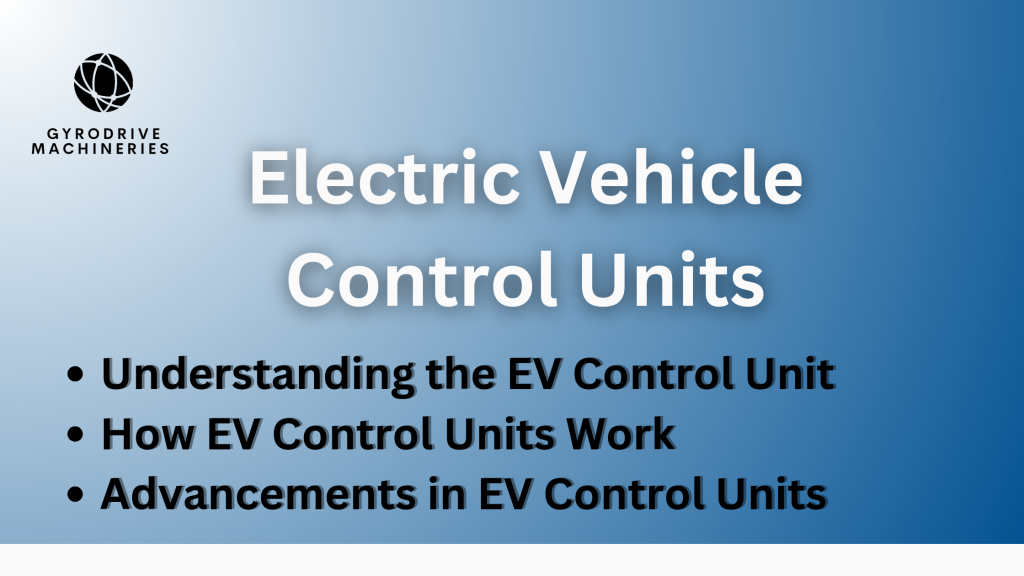Electric Vehicle Control Units
In the pulsating heart of every electric vehicle lies a technological marvel that arrange the symphony of power, efficiency, and precision—the Electric Vehicle Control Unit (EV-CU). This unassuming yet pivotal component is the maestro behind the scenes, conducting a complex ensemble of commands to ensure your EV glides seamlessly down the road. Let’s delve into the wizardry that makes the EV-CU a linchpin in the world of electric mobility.
The Brain Behind the Drive: Understanding the EV Control Unit
You’re behind the wheel of your sleek electric vehicle, ready to embark on a journey powered by the future. Little do you know, the real magic is happening beneath the hood, where the EV-CU takes center stage. This sophisticated electronic brain is the nerve center, processing a myriad of data to optimize the performance of your EV motors.
In essence, the EV-CU is the guardian of efficiency, responsible for managing the flow of electricity from the battery to the electric motors. By precisely modulating this energy transfer, the control unit ensures a harmonious dance between power and consumption, propelling your EV with finesse. Its real-time adjustments contribute not only to the longevity of your battery but also to the overall driving experience, making every journey a seamless and electrifying affair.
Cracking the Code: How EV Control Units Work
At its core, an EV-CU is a complex piece of software and hardware that deciphers the language of electricity. Think of it as a multilingual translator, converting signals from various sensors into actionable commands for the electric motors. From monitoring battery voltage to regulating motor speed and torque, the EV-CU’s responsibilities are as diverse as they are critical.
One of its standout features is its ability to implement regenerative braking—a process where the electric motor turns into a generator, converting kinetic energy back into electrical energy. This not only enhances the overall efficiency of the vehicle but also extends the range of your EV. The EV-CU’s adaptability to diverse driving conditions ensures optimal performance, whether you’re cruising down the highway or navigating through city traffic.
Beyond the Basics: Advancements in EV Control Units
As technology continues to evolve at an unprecedented pace, so does the prowess of the EV-CU. Modern iterations are equipped with advanced machine learning algorithms, enabling them to learn and adapt to your driving habits. This means that over time, your electric vehicle becomes finely tuned to your preferences, providing a customized and intuitive driving experience.
Moreover, these intelligent control units play a pivotal role in the burgeoning realm of autonomous driving. By seamlessly integrating with other vehicle systems, such as sensors and cameras, the EV-CU contributes to the realization of self-driving capabilities. As we hurtle towards the future, the EV-CU stands as a testament to innovation, constantly pushing the boundaries of what electric mobility can achieve.
EV Motors and the Control Unit
In the ballet of electric vehicles, the relationship between the EV-CU and motors is nothing short of symbiotic. The control unit is the discerning choreographer, orchestrating every move, while the motors are the nimble dancers, translating the commands into kinetic energy. This seamless partnership is what makes EVs not just a mode of transportation but a technological marvel that’s rewriting the rules of the road.
As we navigate the electrified highways of tomorrow, it’s crucial to appreciate the unsung hero—the EV Control Unit. It’s the silent architect of a greener and more sustainable future, ensuring that each revolution of your EV motors is a testament to the boundless possibilities of electric mobility. So, the next time you plug in and hit the accelerator, remember that the real magic is happening where technology meets the road—the Electric Vehicle Control Unit.
To know more about Mind-Blowing Innovations click here


Leave a Reply